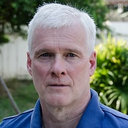Plasma-electrolytes in natives to hypoxia after marathon races at different altitudes.
Кључне речи
Апстрактан
OBJECTIVE
It is well known that altitude natives differ from sea level natives in aspects of fluid and electrolyte homeostasis.
METHODS
To evaluate exercise and environmental influences on the electrolyte and water status in hypoxia adapted subjects, we investigated 11 well-trained marathon runners (33.7 +/- 0.7 yr, 60.5 +/- 1.9 kg), native to an altitude above 2600 m, before and after two marathon races. One competition was held at moderate altitude (AM, 2650 m, 14 degrees C, 55% RH, running time 3 h 6 min +/- 22 min) and another under tropical conditions (HM, 470 m, 28 degrees C, 70% RH, running time 2 h 54 min +/- 30 min). Blood samples were taken 3 d before, immediately after, 1 h after, and 24 h after the races.
RESULTS
The loss in body fluid was calculated to be 2.15 L during AM and 5.05 L during HM, respectively. It was compensated mostly by ingested fluids without electrolyte content and by metabolically produced water, which led to hyponatremia during AM (plasma [Na+] from 144.3 +/- 0.7 to 131.7 +/- 2.1 mmol x L(-1)). Severe dehydration without significant changes in plasma [Na+] could be detected after HM. Serum antidiuretic hormone concentrations and serum aldosterone concentrations significantly increased during both races and remained at a high level for at least 1h after both competitions. Serum atrial natriuretic peptide (ANP) concentrations were at a high level at rest, increasing during HM, and decreasing during AM.
CONCLUSIONS
Under tropical conditions, we found a severe state of dehydration characterized by an extended ANP-response, which was not prevented by water intake during the race. Under hypoxic conditions, however, we found that hyponatremia had developed. This can be partly explained by pure water intake and metabolically produced water, and also, possibly, by a special hypoxia-induced effect.


